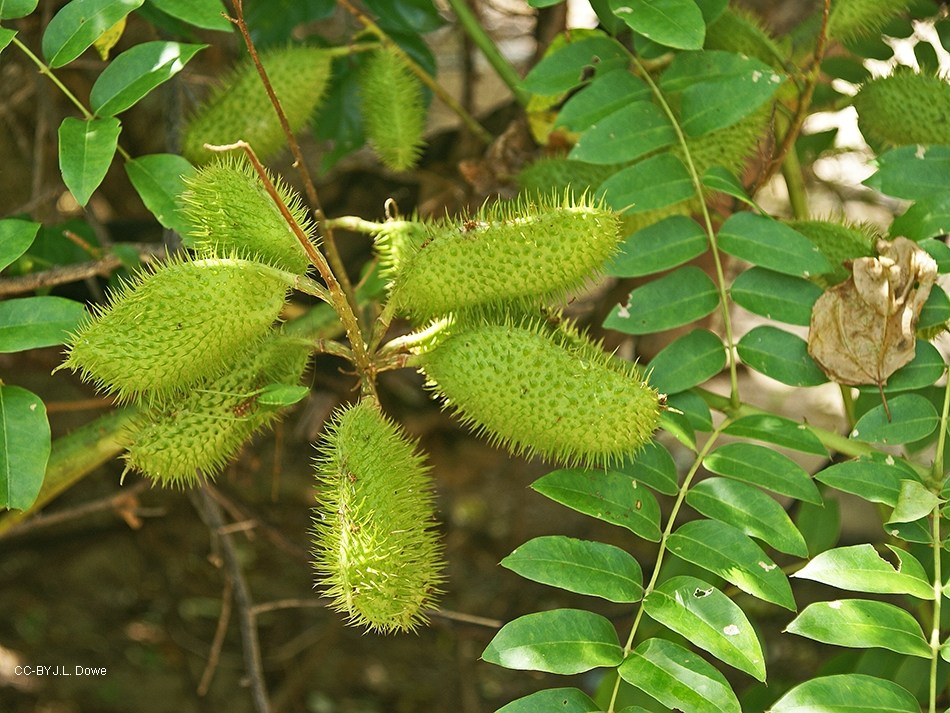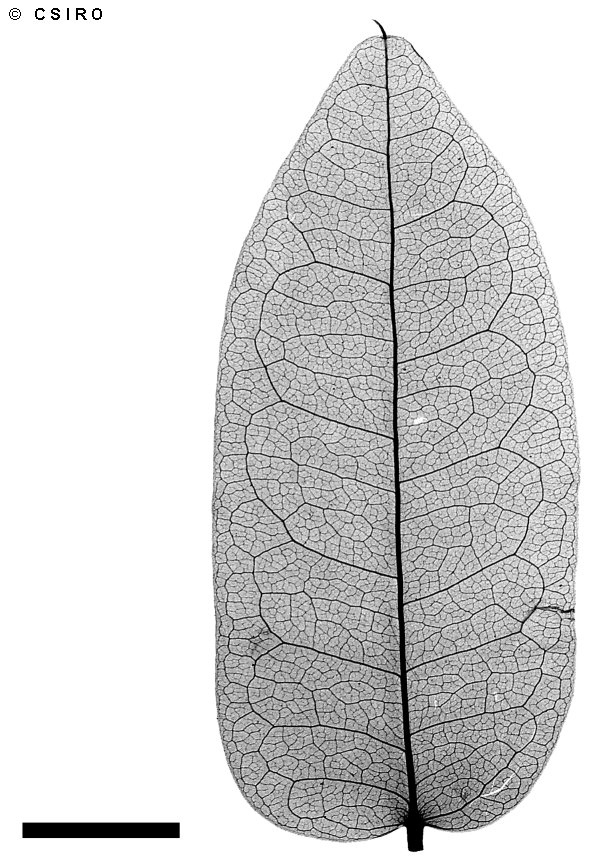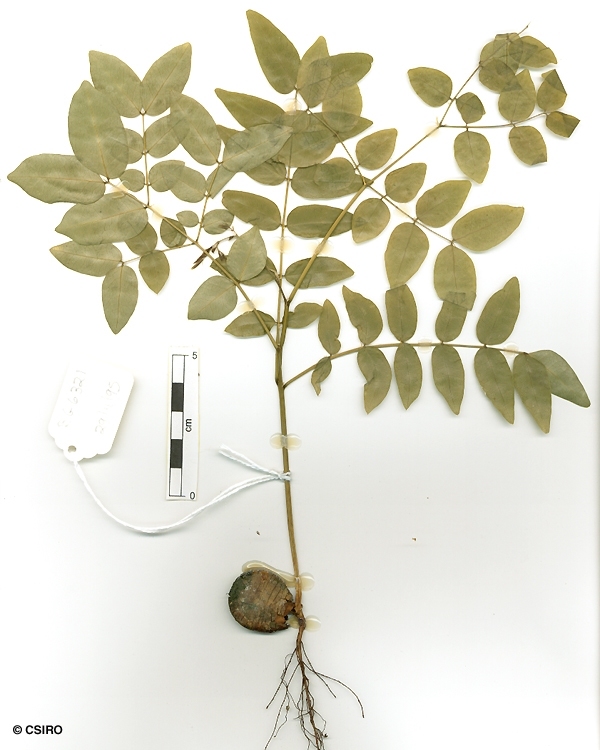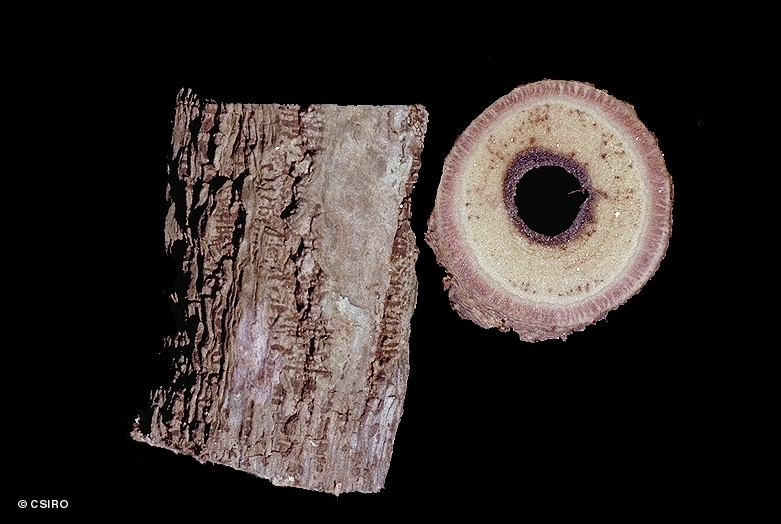Australian Tropical Rainforest Plants - Online edition
Guilandina bonduc L.







Linnaeus, C. von (1753) Species Plantarum 2: 381. Type: Habitat in Indiis. Ceylon, lecto: BM, Herb. Hermann vol. 3, folia 35, no. 156.
Grey Nickerbean; Yellow Nickers; Nut, Nicker; Nicker Nut; Grey Nicker; Wait-a-while
Vine stem diameters to 5 cm recorded. Usually grows as a vine but also flowers and fruits as a shrub. Occasional spines or numerous spines present on the stems. Blaze odour resembles that of fresh green beans (Phaseolus vulgaris). Pith white, quite large in diameter.
Leaflet blades about 18-75 x 12-40 mm, apex obtuse, emarginate or retuse, leaflet stalks about 1-2 mm long. Upper and lower leaflet blade surfaces clothed in pale golden hairs. Stipules foliaceous, about 8-10 x 8-30 mm, consisting of three to five divisions analogous to leaflets. Twigs armed with straight and recurved spines. Underside of the compound leaf primary axes and secondary axes armed with recurved spines.
First pair of leaves compound, usually with about 11 or 12 leaflets and small (about 1-2 mm long) spiny stipules. Stems clothed in short, pale brown hairs and scattered thorns about 1.5-2 mm long. Main compound leaf rhachis clothed in scattered thorns. At the tenth leaf stage: leaves with about 26-100 leaflets, each leaflet +/- ovoid, apex usually acute and the base oblique, glabrous or sparsely pubescent. Stipules small, linear, spine-like or somewhat leafy, about 1.5 mm long. Seed germination time 14 to 33 days.
Occurs in NT, CYP, NEQ, CEQ and southwards to south north-eastern New South Wales. Altitudinal range in northern Australia from near sea level to 300 m. Usually grows in beach forests close to the sea but also found in monsoon forest. This is a pantropic species and occurs on all the major continents.
Food plant for the larval stages of the Speckled Lineblue Butterfly. Common & Waterhouse (1981).
This species may have medicinal properties.
The seeds are regarded as poisonous.
Seeds of this species are found washed up on beaches throughout the world. The seeds are used in the manufacture of necklaces in various places.
The seeds are sometimes used by Indian children as marbles. Oil pressed from the seeds has been used to remove freckles from the face, as a cosmetic, and to stop discharges from ears. Cribb (1981).





